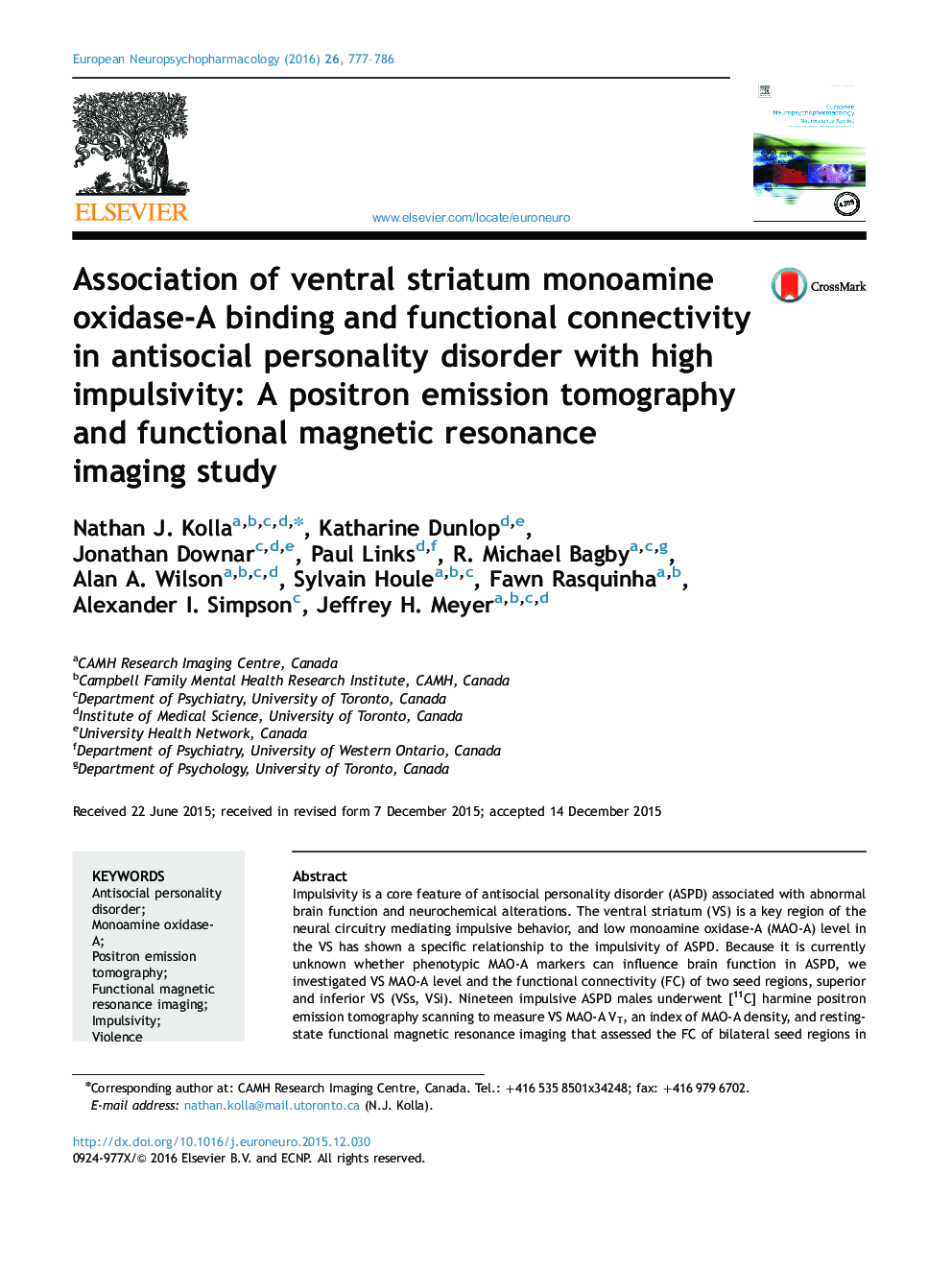| Article ID | Journal | Published Year | Pages | File Type |
|---|---|---|---|---|
| 318737 | European Neuropsychopharmacology | 2016 | 10 Pages |
Impulsivity is a core feature of antisocial personality disorder (ASPD) associated with abnormal brain function and neurochemical alterations. The ventral striatum (VS) is a key region of the neural circuitry mediating impulsive behavior, and low monoamine oxidase-A (MAO-A) level in the VS has shown a specific relationship to the impulsivity of ASPD. Because it is currently unknown whether phenotypic MAO-A markers can influence brain function in ASPD, we investigated VS MAO-A level and the functional connectivity (FC) of two seed regions, superior and inferior VS (VSs, VSi). Nineteen impulsive ASPD males underwent [11C] harmine positron emission tomography scanning to measure VS MAO-A VT, an index of MAO-A density, and resting-state functional magnetic resonance imaging that assessed the FC of bilateral seed regions in the VSi and VSs. Subjects also completed self-report impulsivity measures. Results revealed functional coupling of the VSs with bilateral dorsomedial prefrontal cortex (DMPFC) that was correlated with VS MAO-A VT (r=0.47, p=0.04), and functional coupling of the VSi with right hippocampus that was anti-correlated with VS MAO-A VT (r=−0.55, p=0.01). Additionally, VSs-DMPFC FC was negatively correlated with NEO Personality Inventory-Revised impulsivity (r=−0.49, p=0.03), as was VSi-hippocampus FC with Barratt Impulsiveness Scale-11 motor impulsiveness (r=−0.50, p=0.03). These preliminary results highlight an association of VS MAO-A level with the FC of striatal regions linked to impulsive behavior in ASPD and suggest that phenotype-based brain markers of ASPD have relevance to understanding brain function.
